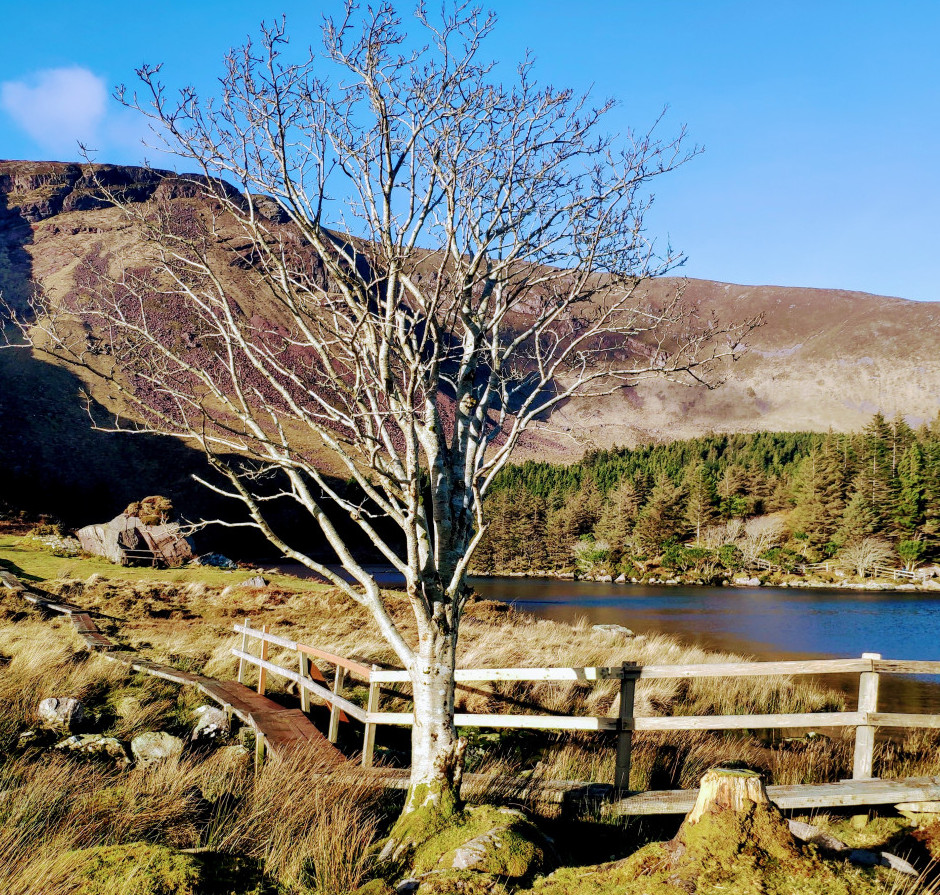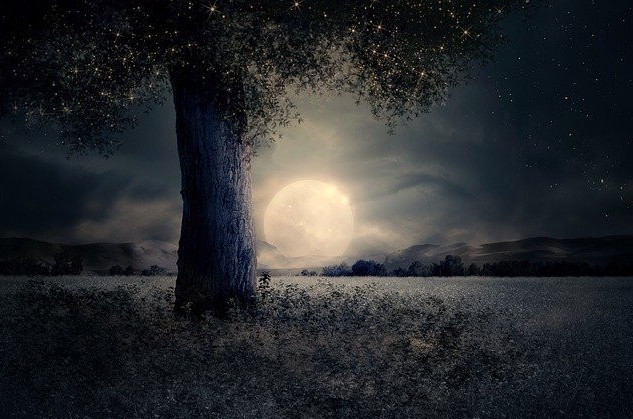
06dd524a6422c2d586dafaa308e5d7cc1609636319 cropped optimized.jpg
The mythology of the Irish fairies is or at least was very much part of rural Ireland. Today most people would laugh if you mentioned fairies and many would imagine tiny winged creatures from a Disney cartoon or childs story book. The truth behind the fairies in Ireland is based on much darker stories of witchcraft and curses or piseogs as they were known in Gaelic
There are hundreds of stories and many which have been lost to time. The following is just from my limited knowledge of the subject to give a brief outline of where the stories come from.
Who are the Fairies
They were the original people of Ireland which were known as Tuatha Dé Danann which translates to English as the tribe of the gods. The tribe would also be later known as our people and it is said when they lost a battle with invading Spanish tribe from Iberia they agreed to live in the underworld under the mounds like ring forts and hills or mountains of Ireland and became super natural beings
Many had names and were worshiped as pagan gods for long before the catholic religion came to Ireland. Although they lived in the other world the also had a connection and interacted with humans in the living world. In a way they are like a tribe of spirits with supernatural powers and a hierarchy of kings queens and gods. Whom all had names and were worshiped for different things’ much like the Nordic gods of the vikings.
The goddess Danu was the mother of all the gods and Dagda was seen as a chief king or father figure. I could write about their names battles and even family tree but that would take hundreds of pages and need a lot of research which would be way too long for a blog post as they were immortal and ruled for hundreds of years. Places like newgrange that are older than the pyramids of Egypt were places where the gods were worshiped and they could use passageways to move between worlds.
The Church
When Catholicism came to Ireland the change was slow and gradual where many of the old beliefs were integrated into the new religion. The Irish monks wrote instead of tuatha de Danann was changed to tuath de meaning gods people. Some goddesses like Brigid who was worshiped for the coming of spring at a pagan festival around the start of February were replaced by a nun with the same name who was canonized a saint and had a feast day on the 1st of February.
Wells and places of worship to the pagan gods were blessed and became holy wells where people could pray to the one true god or saints such as Bridget. Their names were changed at several times known also as the Aos si or the sithe or even the fey.
The name known as the fairies only came when the English tried to translate the word fey make a name for something that had no meaning to them.
Irish people were very religious at that time and the change in religion to catholic was not sudden or straight forward. While they did not want to damn their souls’ to hell for all eternity they did not want to anger their pagan gods either. The sithe were referred to by the church as fallen angels who were partly restored and forgiven by god before they reached hell and were left to roam the earth instead.
Pesogs
There were times when the sithe or the fairies were more active than normal when they could be more likely to play tricks on others such as May the 1st or October 31st. People could even put a curse on neighbors or people who did not like by burying eggs or meat from animals on others land. This was like a form of witchcraft to conjure up the fairies to curse others known as pesogs.
People had a very real fear of the misfortune that could befall them from such a curse and such witchcraft was practiced across the country and tales of the fairies and the misfortune they brought on people they fell foul of were very common throughout Ireland at a time when the main pass time was telling stories around an open fire in the winter evenings.
_-_geograph.org.uk_-_3074977.jpg/256px-Ballyallaban_Ring_Fort_(7)_-_geograph.org.uk_-_3074977.jpg)
The dates people feared the fairies most became May day a holy day when people would bless the house and crops and animals with holy water which could well be blessed water from a holy well where the old pagan gods were once worshiped. The other day the 31st of October became Halloween and the day after became a holy day known as all souls’ day.
While the Church strongly discouraged any form of paganism or worship of false gods I think people at the time were as fearful as the sithe as they were of satin and ending up in hell. This could explain why the old beliefs were in a way incorporated into the newer religion in Ireland.
I think up to the last 100 years ago times were very hard in Ireland Land and possessions were hard for people to own so if someone had misfortune someone else could profit from it which in a way added to the stories of piseogs or witchcraft played on others.
Then their were stories of the banshee (woman of the sithe) who was one of the fairies who would come around a house before someone in that house would die. It was said that she would follow certain family names and would wail and cry with such a scream that no wind or man or animal could make such a sound.

I heard a true tail of an old man who was asked if he believed in the fairies to which he replied with a nervous laugh god no but id still be afraid of them. I think that comment sums it up the way a lot thought about them in old Ireland. While they went to mass and prayed to god they did not want to trouble the spirits of the underworld either.
People would do strange things’ like keeping a bundle of the harvest in the house to ward of evil which was later replaced by the st Bridget cross (a cross made from harvest or rushes) or placing salt around the house or even give a warning when throwing water out at night so as not to upset the fairies and even kept artifacts like steel or a bible to ward of their spells and prevent them being captured and turned into a changeling where the true person was carried away to their place under the ground and a changed person left in their place.
“There is one famous story of Michael Cleary, a Tipperary man who murdered his wife Bridget in 1895 as her family members including her own father looked on because they all believed she was not of this world. They believed that Bridget had been taken by the fairies and a changeling or a witch was left in her place. After her death Michael was seen smartly dressed, waiting for days outside the local fairy fort for her return.”
Today the saying still exists here that someone is away with the fairies meaning they are odd or a strange person. While their are a lot of old stories of what the fairies did to people and the tricks they played a lot has being lost to history too. When writers tried to gather information in the past they said they found it difficult to get people to talk about it. I am not sure if it was the fear of the church or fear of the fairies or maybe just the fear of seeming mad but whatever reason I think up to a fairly recent past some people had a very real belief or superstition about such things’
Just as witchcraft or voodoo was in parts of Africa the belief in the fairies was real in Ireland. The name they were called was changed many times over the years and some even referred to them as the other people almost in fear to mutter their name. As time past the stories drifted more towards mythology and many of the original stories and beliefs have been lost.

Modern Ireland
There are still some old pagan festivals like Puck fair in killorglan in Kerry each year or Halloween which has its roots from pagan times but in general today these stories of mythical beings are mostly forgotten and most people would laugh at the idea if you mentioned the word fairies to them but at the same time if you asked any farmer living in rural Ireland to cut down a lone hawthorn tree still known as a fairy tree or to dig stones out of a ring fort more commonly known as a fairy fort where the fairies are said to dwell Id bet they would give you plenty excuses why the wouldn’t want to do such a thing.
If you are wondering if I am superstitious about such things’ no I have broken mirrors and walked under ladders and never lost a wink of sleep over it but at the same time don’t be asking me to help with anything you are doing around a fairy fort of to cut down a lone hawthorn tree for you because I would not even lend you my chainsaw.


(click image for more)
If you are interested in hearing more about the fairies and stories of old a good book I would recommend is called fairy and folk-tales of Ireland that was first written by the renowned WB Yeats over 100 years ago .
Source link
2021-01-03 12:31:32
Karl Hoffman is a distinguished agriculturalist with over four decades of experience in sustainable farming practices. He holds a Ph.D. in Agronomy from Cornell University and has made significant contributions as a professor at Iowa State University. Hoffman’s groundbreaking research on integrated pest management and soil health has revolutionized modern agriculture. As a respected farm journalist, his column “Field Notes with Karl Hoffman” and his blog “The Modern Farmer” provide insightful, practical advice to a global audience. Hoffman’s work with the USDA and the United Nations FAO has enhanced food security worldwide. His awards include the USDA’s Distinguished Service Award and the World Food Prize, reflecting his profound impact on agriculture and sustainability.







